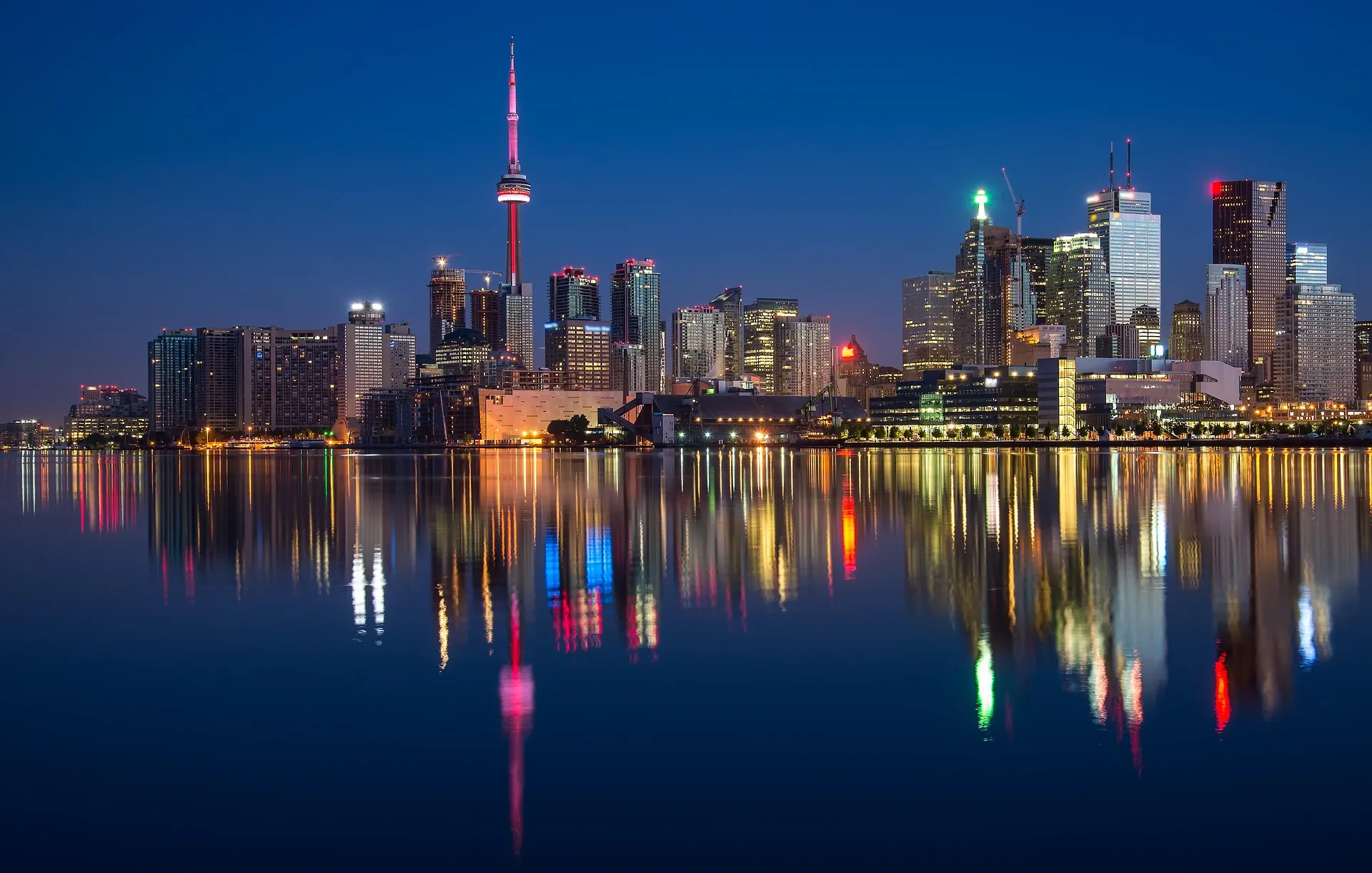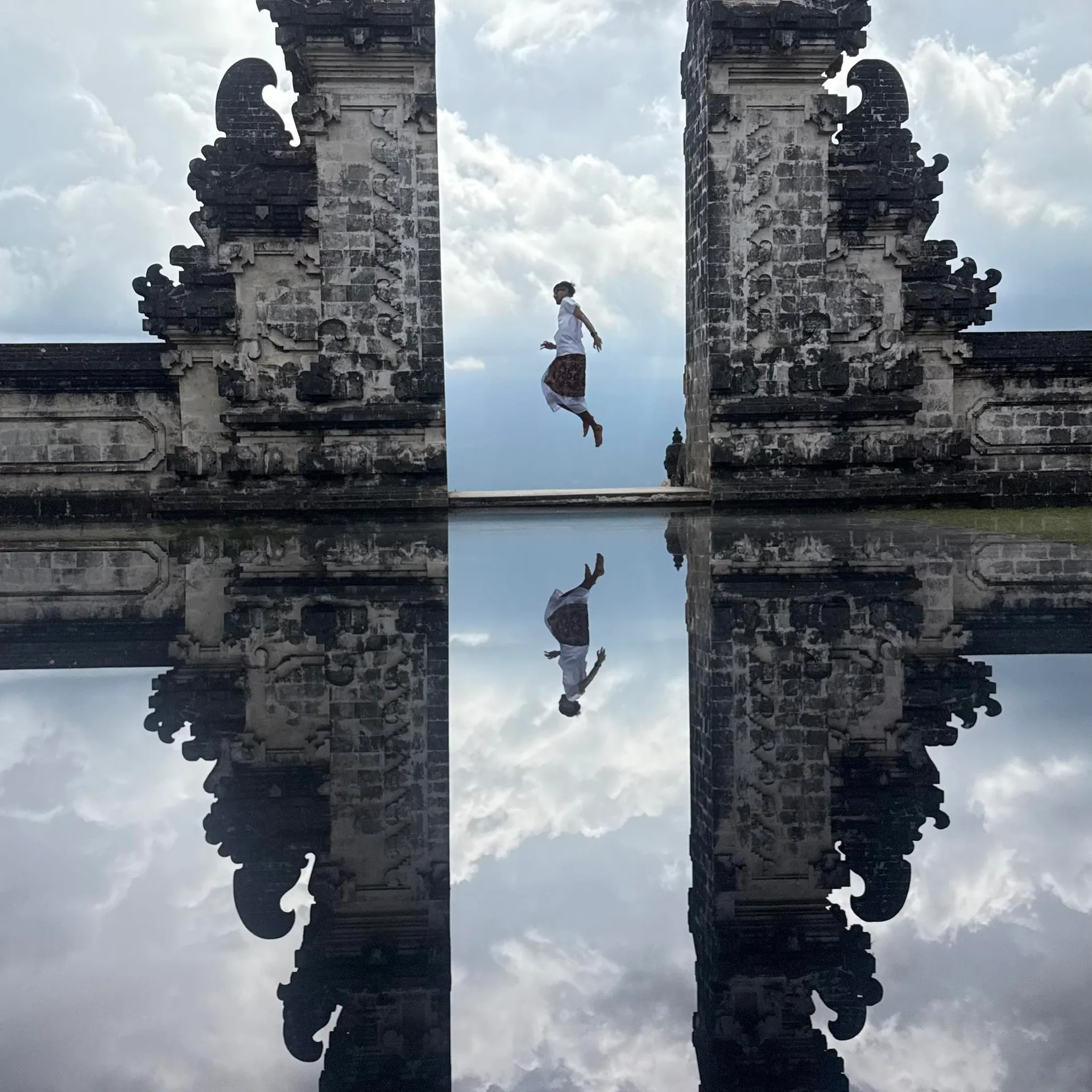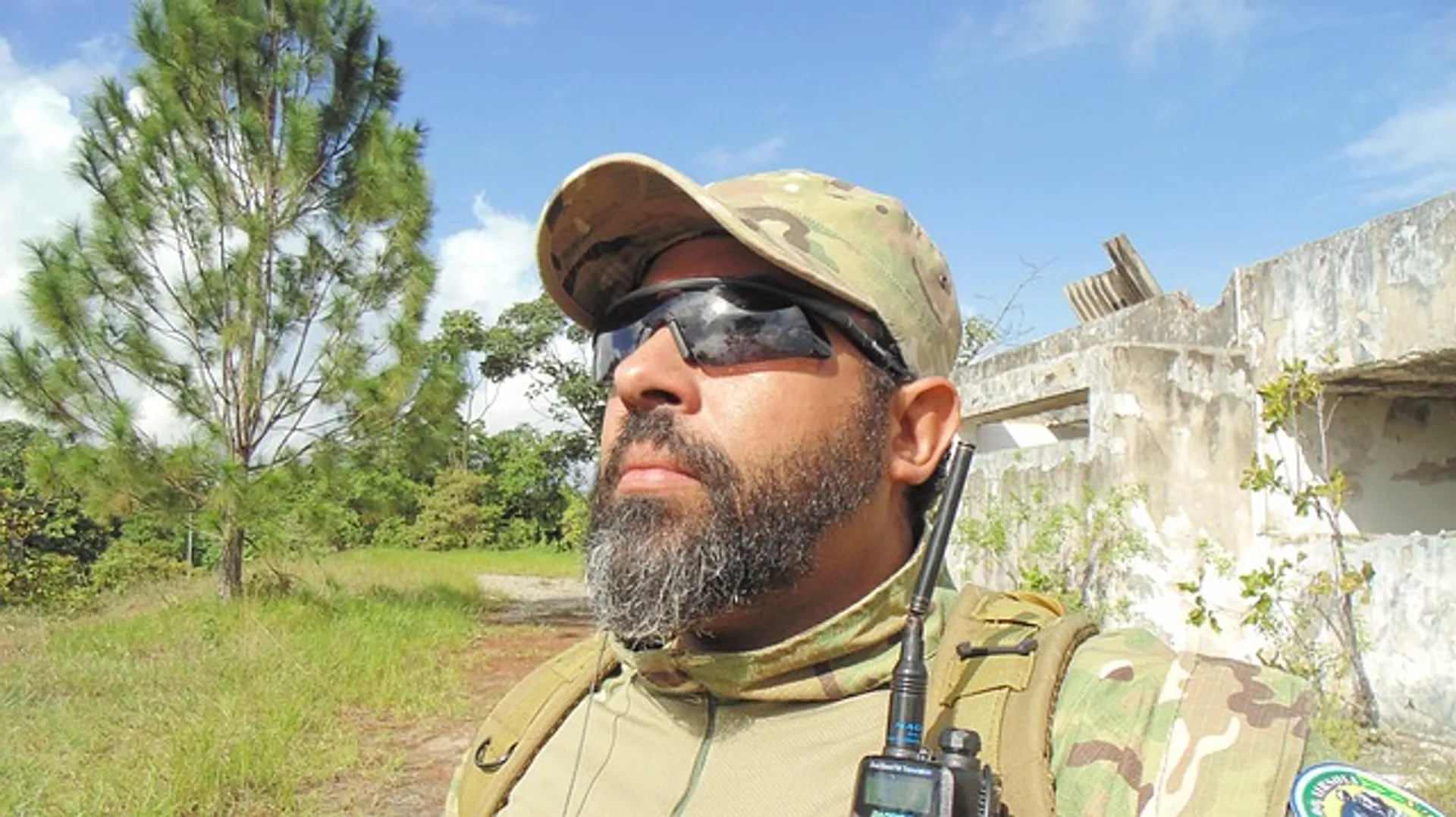




canada visa for japanese
Select Visa Type
180 Days multiple Entry
ETA
multiple Entry
Validity 730 Days
Stay 180 Days
Get on
16 Sep 2025
canada Visa Requirements
Photo
Passport
How canada Visa Process Works
Step 1: Apply with Visa Centre Au
fill details & upload required documents via Visa Centre Au.
Step 2: Documents Verification
Your documents will Verified by our advisor. We will contact you if any further information required.
Step 3: Your Visa Gets Processed
eVisa Process
- We will submit your documents to the immigration department.
Embassy visa Process
- visa advisor will be assigned to your Application and assist with your Application and appointment booking.
- Attend visa appointment.
- Submit visa appointment to the immigration.
Step 4: Get Your Approved Visa on
You will receive an email notification of your visa approval and you can download from your Visa Centre Au account.
Reviews & Ratings
4.5/5
Based on 19 reviews
5
100%
4
0%
3
0%
2
0%
1
0%
On Time
Easy
Fast
Reliable
TrustWorthy
Cherrice Blizzard
australia
Immigration site had crashed
I had read on FB that the immigration site had crashed and there were continual issues when i wanted to do my 60 visa. I contacted Visa Centre Au and they processed my visa, no stress, no issues, simple process. I was even able to ring them to discuss my concerns. Thank you Visa Centre Au 🙏 😊

Amisha Dahal
australia
Got visa within a week
Got visa within a week. Very helpful. I will definitely recommend to others as well.

Prashansha Karki
australia
Fast and easy service
Fast and easy service, got a visa in couple of hours. Highly recommended!!

Soney S
australia
Reliable and great service
Very satisfied with the customer service provided recently as the visa was granted within a week. Highly recommended visa service centre if you looking for a professional, trustworthy, reliable, and responsive provider, who helps with your processing overall and clears all your queries with quick responses and great support👍Thankful to Mr Prem, you have been a great help.

Sujan Khatri
nepal
Great staff and easy process
Had a great experience with Visa Centre AU, the process was easier and the team was very responsive and giving me update on each part of the application. Love the service.

Sujan Paudel
australia
Thanks so much to Visa centre Au team…
Thanks so much to Visa centre Au team for all the help. Applying visa from them was really easy and they helped me every step of the way guiding me. My overall experience with the team was amazing and i highly recommend working with them.

Sunita Maharjan
nepal
Easily approachable and very reliable.
Easily approachable and very reliable.

Osama Ahmed Khan
pakistan
Very professional
Very professional Applied visa on 19th and received a day after on 21th Well satisfied 🥰🥰
Alina Chauhan
australia
Very helpful and professional team
Very helpful and professional team. Highly recommended.
Madhu Limbu
australia
Friendly and Convenient
Friendly support. All we had to do was provide the pics of our documents. Very convenient

Nishant Shrestha
nepal
Very Professional
Thank u so much visa centre AU for being so much helpful n understanding in every step of our visa process for thailand. I m very much pleased with ur effort and service. I am very much happy from ur service n Il be recommending my friends n family for choosing ur center. Thank u😍😊😊

Hawraa S
australia
I was in a tight situation but with…
I was in a tight situation but with visa centre he made my life easier Best team I've worked with Deserved the 5 stars

Roshani Thapa
australia
I want to thank visa centre Au for…
I want to thank visa centre Au for exceptional performance for solving visa issues . Greatly appreciate what you have done for me . I am grateful for ur valuable advice .most important is thank you for supporting us during crisis situations. Truly grateful for valuable service and emotional support.

kamal maharan
australia
Thank you for making my life easy
Thank you for making my life easy. As promised Bali visa in 2 days. Best in the business. Very much genuine, they are there to help people and make our life easy while traveling...really great service...once again thank you guys so so much.

Sunny Shrestha
australia
Visa granted in 4 days
I recently applied for a Japan visa through the Visa Centre, and I’m very pleased with the experience. The process was smooth, efficient, and professionally handled. My visa was granted without any issues. Highly recommend their service!

Manik Guragain
thailand
I booked a longtail boat to Phi Phi
I booked a longtail boat to Phi Phi Island through Visa Centre AU, and honestly, it was one of the best decisions I made on my trip. The entire experience—from booking to the actual tour—was smooth and hassle-free. The water was crystal clear, the views were straight out of a postcard, and the peaceful ride on the longtail boat made it feel like a private escape to paradise. Big thanks to the team for their quick response and friendly service. They made everything so easy. If you’re planning a trip to Thailand and want something truly special, I highly recommend booking through them. I’ll 100% be reaching out again for my next adventure. Don’t miss this—it’s worth every cent!
canada Visa Rejection Reasons
Factors than can get your visa rejected
Expired Passport
Applying with a passport that has expired or expires within 6 months.
Insufficient Funds
Failing to demonstrate enough financial resources to support your stay.
Criminal Record
Having a criminal history that disqualifies you from obtaining a visa.
Previous Visa Violations
Having overstayed or violated the terms of a previous visa.

Canada Tourist Visa - An Essential Guide for Travelers
Navigating the process of obtaining a Canada Tourist Visa, officially known as a Temporary Resident Visa (TRV), can appear complex and daunting for many travellers. This comprehensive guide aims to demystify the entire process, providing a structured, step-by-step roadmap for prospective visitors. From understanding the core eligibility requirements and the crucial distinction between a visa and an Electronic Travel Authorisation (eTA) to a detailed walk-through of the online application, this report is designed to be a definitive resource. It addresses common questions, highlights critical pitfalls to avoid, and offers a clear perspective on the financial and biometric requirements.
Beyond a simple procedural breakdown, this guide underscores the strategic approach required to submit a compelling application that minimises the risk of refusal. It explains the fundamental principles that govern an immigration officer's decision-making process, focusing on how to build a profile that demonstrates a clear purpose for travel and a strong intent to return home. Ultimately, this report illustrates that while the process demands meticulous attention to detail, a successful application is well within reach with the right information and professional guidance. MyVisitVisa stands as the ideal partner for travellers seeking to ensure their application is as robust and accurate as possible, alleviating stress and providing peace of mind throughout their journey to Canada.
Understanding the Canada Tourist Visa
What is a Canada Tourist Visa (Temporary Resident Visa)?
A Canada Tourist Visa, formally referred to as a Temporary Resident Visa (TRV), is an official document that the Government of Canada affixes to a foreign national's passport. Its purpose is to grant a traveller permission to enter Canada for a temporary period, which can include tourism, visiting family or friends, or engaging in certain business activities. The visa itself is a physical sticker or stamp that acts as a formal record of a traveller's authorisation to enter the country.
It is imperative for travellers to understand that a TRV must be obtained prior to departure from their home country. Unlike some other destinations, Canada does not offer a "visa on arrival" program for countries that require a TRV. Attempting to travel to Canada without this document, if it is required for your nationality, will result in being denied boarding by the airline and refusal of entry upon arrival. The TRV signifies that, based on the submitted application, the traveller has met the requirements of the Immigration and Refugee Protection Act (IRPA) and the Immigration and Refugee Protection Regulations for a temporary stay.
Who Needs a Tourist Visa and Who is Exempt?
The determination of whether a traveller needs a visa or an Electronic Travel Authorisation (eTA) is a fundamental first step. The distinction is crucial, as most travellers will require one or the other, but not both. A visa is typically required for citizens of countries that do not have a visa-exemption agreement with Canada. In these cases, the traveller must apply for and receive a TRV before travelling.
Conversely, citizens from visa-exempt countries do not need a visa. However, if they are flying to or transiting through a Canadian airport, they must first obtain an eTA. The eTA is a digital document that is linked to the traveller's passport and serves as a security pre-screening measure. It is important to note that the eTA is a requirement for air travel only; it is not needed if the traveller is entering Canada by land or sea.
There are also several important exceptions and specific rules that apply to certain traveller groups:
- United States Lawful Permanent Residents (Green Card holders): These individuals are exempt from the eTA requirement when flying to Canada. However, they must carry a valid passport from their country of nationality and a valid Green Card or other official proof of their permanent resident status.
- Dual Canadian Citizens: Individuals who hold both Canadian citizenship and citizenship from another country must use a valid Canadian passport to enter or transit through Canada by air. A foreign passport, even if accompanied by a valid eTA, will not be accepted for entry by air.
- U.S. Citizens: U.S. citizens are visa-exempt and do not require an eTA for entry into Canada.
Essential Eligibility Requirements for All Applicants
Regardless of nationality, all applicants for a Canada Tourist Visa must satisfy a set of core eligibility requirements. Immigration officers assess an application based on a holistic review of these factors to ensure the applicant poses no risk to the security or integrity of Canada's immigration system. The process goes beyond a simple checklist; it is a strategic exercise in building a persuasive, low-risk profile that provides a strong incentive for the officer to grant the visa.
The most critical requirements include:
- Demonstrating a Temporary Stay: The applicant must provide compelling evidence to an immigration officer that they will leave Canada at the end of their authorised stay. This is the single most important factor and is evaluated based on the strength of the applicant's ties to their home country.
- Financial Adequacy: The applicant must show that they have sufficient funds to support themselves and any accompanying family members for the duration of their visit, as well as enough money to cover their return travel. This demonstrates that the traveller will not become a "public charge" during their time in Canada.
- Strong Ties to Your Home Country: This is often a significant point of scrutiny. The applicant must demonstrate strong ties that would compel them to return home after their visit. These ties can include evidence of stable employment, property ownership, family commitments, or educational enrolment. The goal is to prove that the applicant has more reasons to return to their home country than to stay in Canada.
- Health and Security Requirements: To be eligible for a TRV, an applicant must be in good health and not pose a risk to the security of Canada. This means having no record of criminal activity. For stays longer than six months, or for certain occupations, a medical exam may be required.
An officer's decision is not based on a single point but on the cumulative strength of the entire application. A lack of clarity in one area, such as a vague purpose for the visit, can raise concerns and undermine the credibility established by other documents. The entire application is a single, interconnected narrative designed to convince the officer that the benefit of granting the visa outweighs any perceived risk of the traveller overstaying or violating the terms of their stay.
Canada Tourist Application Journey Step-by-Step Guide
The Online Application Process: A Detailed Walk-through
The standard application for a Canada Tourist Visa is submitted through the official Immigration, Refugees and Citizenship Canada (IRCC) online portal. The process is designed to be user-friendly, guiding applicants through a series of steps to ensure all necessary information and documents are provided.
- Step 1: Set Up Your IRCC Portal Account: The first step is to create a secure personal account on the IRCC portal. This account serves as the central hub for the entire application journey. It is where an applicant will start their application, submit it, pay the required fees, receive important messages and updates, and check the status of their application throughout the processing period.
- Step 2: Answer the Application Questions: Once the account is set up, the applicant begins the process by answering a series of questions about their purpose of visit and personal background. The system is designed to be intuitive; for example, the required documents list is tailored based on answers to questions like the reason for the visit (e.g., "visit family"). It is critical to answer every question completely and truthfully, saving progress as you go. The application does not need to be completed in one sitting, as applicants have up to 60 days to finish it once started.
- Step 3: Upload Supporting Documents: Based on the answers provided, the system will generate a customised checklist of required and optional documents. This is where the applicant uploads all supporting paperwork, such as bank statements, proof of employment, and any invitation letters. After all documents have been uploaded and saved, the applicant will be directed to a "Consent and Declaration" page to review, confirm, and sign by entering their name.
- Step 4: Pay the Fees: The final stage of the submission process is to pay the necessary fees. The application fee and the biometrics fee can be paid at the same time using a credit card. Paying both fees simultaneously is highly recommended as it accelerates the overall process.
Required Documents Checklist: Mandatory and Recommended
A meticulously prepared set of documents is a cornerstone of a successful application. Applicants must provide both mandatory and supplementary documents to build a robust case for their temporary stay.
- Mandatory Documents:
- Valid Passport: A passport that is valid for the duration of the planned stay in Canada.
- Application Forms: The completed and signed application forms, which are filled out online.
- Proof of Funds: Financial information and bank statements for the past six months to show sufficient savings to cover all travel and living expenses.
- Proof of Ties to Home Country: Documents like a letter from an employer, property deeds, or proof of enrolment in an educational institution.
- Invitation Letter: If visiting family or friends, a letter of invitation from the host in Canada is required.
- Digital Photograph: A photo that meets the specific requirements outlined in the application process.
- Recommended Documents:
- Personalised Cover Letter: A personalised letter of explanation that clearly outlines the intent of the visit, the applicant's strong ties to their home country, and their financial readiness for the trip. This is crucial for addressing potential concerns proactively.
- Detailed Travel Itinerary: A clear plan of what the applicant intends to do in Canada, including dates of arrival and departure, places they will stay, and planned activities. This eliminates ambiguity about the purpose of the visit.
- Travel History: Details of places visited in the past five years, including entry and exit dates. Providing copies of previous passports and visa stamps gives a complete picture of past travels.
The Biometrics Process: What it is and What to Expect
Biometrics, which consist of a photograph and fingerprints, are a critical component of most temporary and permanent residence applications for Canada. This data is collected to protect the safety and security of Canadians, ensure the integrity of the immigration system, and help identify individuals upon arrival.
- Who Needs to Provide Biometrics? Most foreign nationals applying for a temporary resident visa are required to provide their biometrics. There are exemptions, such as for U.S. nationals or applicants who have provided their biometrics within the last 10 years.
- The Process: The process of providing biometrics begins only after an applicant has submitted their visa application and paid the biometrics fee. After the payment is processed, a Biometric Instruction Letter (BIL) will be sent to the applicant's IRCC account. This letter is mandatory and must be brought to an official biometric collection location, such as a Visa Application Centre (VAC). It is essential to book an appointment and to provide biometrics promptly after receiving the instruction letter.
- Validity and Timing: Biometrics are typically valid for a period of 10 years. One of the most critical aspects of the application process is the timing of biometrics submission. The application processing time stated by IRCC does not begin until after biometrics have been submitted and the instruction letter has been received. Therefore, a delay in paying the fee or booking an appointment can significantly push back the overall timeline for a decision. It is strongly recommended to provide biometrics as quickly as possible to avoid a backlog and ensure the application moves forward without unnecessary delays.
Understanding Processing Times: What Impacts Your Wait
The processing time for a Canada Tourist Visa can vary considerably, ranging from a few weeks to several months. The official processing times are country-specific and are influenced by a variety of factors.
Key variables that can affect the timeline include:
- Application Completeness: An incomplete application or one with inconsistencies will lead to delays or outright refusal.
- Volume of Applications: Seasonal demand and a high volume of applications can create backlogs and extend processing times for all applicants.
- Information Verification: How easily an officer can verify the information provided in the application is a major factor. Complicated cases, additional document requests, or the need for a security screening can prolong the process.
- Response Time: The time an applicant takes to respond to a request for additional information from the visa office directly impacts the overall timeline.
Given these variables, it is prudent to apply for a tourist visa at least two to three months before the intended travel date. Travellers should avoid booking any non-refundable travel, such as flights or accommodation, until they have received their visa.
Financials - A Breakdown of Fees for Canada tourist Visa
Understanding the costs associated with a Canada Tourist Visa application is an essential part of the planning process. The fees are standardised and are payable online via credit card at the time of application submission.
Standard Visitor Visa Fees
The primary application fee for a visitor visa is a fixed cost based on the number of applicants.
- Visitor Visa (including Super Visa): The fee is $100 CAD per person, covering a single-entry or a multiple-entry temporary resident visa.
- Visitor Visa—Per Family: For a family of five or more people who are applying at the same time and place, there is a maximum fee of $500 CAD. This provides a cost-effective option for large family groups.
The Biometrics Fee: Individual and Family Rates
In addition to the visa application fee, a separate fee for biometrics is required.
- Biometrics—Per Individual: The fee for a single applicant is $85 CAD.
- Biometrics—Per Family: A family of two or more eligible people applying together at the same time is subject to a maximum fee of $170 CAD. This family rate is applicable to a spouse or common-law partner, their dependent children, and their dependent children.
Other Potential Costs
While the application and biometrics fees are the most common costs, applicants should be aware of other potential expenses:
- Medical Exam: If a medical exam is required based on the length of stay or the nature of the visit, the applicant will need to cover the cost of the examination from a Panel Physician.
- Certified Translations: All documents submitted to IRCC must be in either English or French. If an original document is in another language, it must be accompanied by a certified translation, which will incur additional costs.
- Super Visa Medical Insurance: For a Super Visa application, which allows extended stays for parents and grandparents, it is a mandatory requirement to provide proof of private medical insurance from a Canadian company. The insurance must have a minimum coverage of $100,000 CAD and be valid for at least one year.
Table: Canada Tourist Visa Fees at a Glance
| Fee Type | Price ($CAN) | Notes/Conditions |
| Visitor Visa (per person) | 100.00 | Single or multiple-entry temporary resident visa. |
| Visitor Visa (per family) | 500.00 | Maximum fee for a family of 5 or more people applying at the same time. |
| Biometrics (per individual) | 85.00 | Per person fee. |
| Biometrics (per family) | 170.00 | Maximum fee for a family of 2 or more eligible people applying at the same time. |
| Temporary Resident Permit | 239.75 | For individuals deemed inadmissible to Canada. |
The Visa-Exempt Traveller - eTA and Other Entry Methods
What is an Electronic Travel Authorisation (eTA)?
An Electronic Travel Authorisation (eTA) is a digital document that serves as an initial screening process for visa-exempt foreign nationals travelling to Canada by air. It is electronically linked to a traveller's passport and acts as a security measure, allowing authorities to pre-screen visitors before they board their flight. The eTA is valid for up to five years, or until the linked passport expires, whichever comes first.
Who is Eligible for an eTA? A Comprehensive Country List
Citizens of certain countries are eligible to apply for an eTA instead of a visa when travelling to Canada by air. The following list, compiled from publicly available information, includes many of the countries whose citizens may be eligible for an eTA.
- Andorra
- Antigua and Barbuda (Some citizens may be eligible for an eTA if they meet certain requirements)
- Argentina (Some citizens may be eligible for an eTA if they meet certain requirements)
- Australia
- Austria
- The Bahamas
- Bahrain
- Barbados
- Belgium
- Belize
- Botswana
- Brazil (Some citizens may be eligible for an eTA if they meet certain requirements)
- Brunei
- Bulgaria
- Chile
- Costa Rica (Some citizens may be eligible for an eTA if they meet certain requirements)
- Croatia
- Cyprus
- Czechia
- Denmark
- Estonia
- Finland
- France
- Germany
- Greece
- Grenada
- Guatemala
- Guyana
- Hong Kong Special Administrative Region (SAR)
- Hungary
- Iceland
- Ireland
- Israel
- Italy
- Japan
- Latvia
- Liechtenstein
- Lithuania
- Luxembourg
- Malta
- Monaco
- Morocco (Some citizens may be eligible for an eTA if they meet certain requirements)
- Netherlands
- New Zealand
- Norway
- Oman
- Panama (Some citizens may be eligible for an eTA if they meet certain requirements)
- Philippines (Some citizens may be eligible for an eTA if they meet certain requirements)
- Poland
- Portugal
- Qatar
- Romania
- Samoa
- San Marino
- Saudi Arabia
- Seychelles (Some citizens may be eligible for an eTA if they meet certain requirements)
- Singapore
- Slovakia
- Slovenia
- South Korea
- Spain
- St Kitts and Nevis (Some citizens may be eligible for an eTA if they meet certain requirements)
- St Lucia (Some citizens may be eligible for an eTA if they meet certain requirements)
- St Vincent and the Grenadines (Some citizens may be eligible for an eTA if they meet certain requirements)
- Sweden
- Switzerland
- Thailand (Some citizens may be eligible for an eTA if they meet certain requirements)
- Tonga
- Trinidad and Tobago (Some citizens may be eligible for an eTA if they meet certain requirements)
- Tuvalu
- United Arab Emirates
- United Kingdom
- United States
- Uruguay (Some citizens may be eligible for an eTA if they meet certain requirements)
- Vatican City
It is imperative that travellers consult the official IRCC website for the most current and accurate list of eTA-eligible countries, as this list is subject to change at any time.
The eTA Application Process
The application for an eTA is a straightforward, online process that is completed in one session. The form cannot be saved and must be filled out completely before submission.
To complete the application, travellers must have a valid passport from an eTA-eligible country, a credit or debit card for the non-refundable $7 CAD fee, and a valid email address. Most applications are processed and approved within minutes. In some cases, the system may request additional documents to complete the screening process. If this happens, an email with instructions will be sent to the applicant within 72 hours.
Key Differences: Visa vs. eTA
The most significant distinction between a visa and an eTA lies in their purpose, the method of travel they are valid for, and their format.
| Feature | Visitor Visa (TRV) | Electronic Travel Authorisation (eTA) |
| Purpose | A formal entry authorisation and document affixed to a passport. | A digital security screening tool for visa-exempt nationals. |
| Travel Method | Required for most methods of entry, including air, land, and sea. | Required for air travel only. Not needed for entry by land or sea. |
| Format | A physical sticker placed inside a passport. | A digital authorisation linked to the traveller's passport number. |
| Validity | Can be valid for up to 10 years. | Valid for up to 5 years, or until the passport expires. |
| Cost | $100 CAD per person (plus biometrics). | $7 CAD (non-refundable). |
Avoiding Pitfalls - Common Mistakes & Rejection Red Flags for Canada Tourist Visa
A significant percentage of visa application refusals are a direct result of common, avoidable errors. A thorough understanding of these pitfalls and the underlying concerns of immigration officers is crucial for a successful application.
The "Top 8" Reasons for Visa Refusal and How to Address Them
- Incomplete or Incorrect Documentation: Providing an incomplete application or failing to include all required supporting documents is one of the most frequent reasons for rejection. An officer may refuse an application because they do not have all the necessary information to make a decision. To prevent this, an applicant must use the official document checklist provided by IRCC and double-check that every required document is included, accurate, and up-to-date.
- Insufficient Proof of Ties to Home Country: If the applicant fails to convince the officer that they have compelling reasons to return to their home country, their application will likely be refused. This creates a concern that the applicant may overstay their authorised visit. The solution is to provide comprehensive supporting documents, such as a letter of employment detailing tenure and position, property ownership deeds, evidence of family dependents, or enrolment in a home country educational program.
- Unclear Purpose of Visit: A vague or poorly explained purpose for the visit can raise suspicion about the applicant's true intentions. The immigration officer must understand why the traveller is visiting and what they plan to do in Canada. To overcome this, a detailed itinerary should be included with the application, specifying where the traveller will stay, planned activities, and any pre-arranged meetings or events.
- Financial Inadequacy: Failing to provide sufficient proof of financial stability is a common cause of rejection. This raises concerns that the traveller will not have enough funds to cover their expenses and may become a public charge. To address this, applicants must ensure their bank statements show sufficient savings for the entire trip and should be prepared to explain any large or inconsistent deposits or withdrawals.
- Ignoring Previous Visa History: Providing incomplete or dishonest information about prior visa rejections from any country can lead to an outright denial. It is essential to be truthful and to include an explanation of how circumstances have changed since any previous refusal. An honest explanation demonstrates integrity and addresses the officer's potential concerns directly.
- Misrepresentation: This is a serious offence that involves submitting false information or forged documents. Misrepresentation can lead to a ban on entering Canada for several years. It is critical to provide only accurate and verifiable information. If there is any uncertainty about details, it is best to consult with a professional to ensure the application is truthful and accurate.
- Overlooking Language Requirements: All supporting documents submitted to IRCC must be in either English or French. Submitting documents in other languages without a proper certified translation can lead to delays or rejection. The applicant must ensure that any non-English or non-French documents are accompanied by a certified translation.
- Relying on Generic Cover Letters: A generic or poorly written letter of explanation that fails to address the applicant's specific circumstances or potential concerns from the visa officer can weaken an otherwise strong application. A personalised letter that outlines the intent of the visit, the applicant's ties to their home country, and their financial readiness for the trip can significantly improve the application's strength.
How to Re-apply After a Refusal
If a visa application is refused, the official decision letter will state the reasons for the refusal. It is possible to re-apply, but a new application should only be submitted if there has been a significant change in the applicant's situation since the previous refusal. Simply submitting the same application again without addressing the reasons for the initial refusal is unlikely to yield a different result. Instead, the applicant should analyse the refusal letter, understand the specific concerns, and gather new evidence that directly addresses those concerns.
Comprehensive FAQ
Q: How long can I stay in Canada as a visitor?
Most visitors are authorised to stay in Canada for up to six months. However, upon arrival at the port of entry, a border services officer has the discretion to allow a shorter or longer stay. The officer will either stamp the traveller's passport with the authorised departure date or will place a visitor record in the passport indicating the date by which they must leave.
Q: What documents should I have with me at the border?
Even with an approved visa or eTA, travellers must be prepared to show additional documents at the port of entry. It is advisable to have a return or onward ticket, proof of sufficient funds to support the stay, and any relevant documents from the application, such as a letter of invitation.
Q: Can I travel with a new passport if my visa is in the old one?
Yes, if a traveller has a valid visa in an expired passport and they receive a new passport, they can use both documents for travel. The traveller must present both the old passport with the valid visa and the new, valid passport to the border services officer upon entry.
Q: Do I need a transit visa?
Travellers who are citizens of a visa-required country and are transiting through a Canadian airport on their way to another country must have a transit visa. This applies even if they are only in Canada for a short layover. However, a transit visa is not required if the traveller is a citizen of a visa-exempt country and holds a valid eTA.
Q: Can I apply for a visa for my whole family?
Yes, you can submit a single application for your entire family if they are travelling together. However, fees may apply per person, or a maximum family rate may be applied depending on the type of application and the number of family members.
Q: What if I have a criminal record?
A criminal record may make an individual "inadmissible" to Canada. In such cases, the individual may not be permitted to enter the country for any reason, including visiting, working, or studying. Depending on the nature of the offence and the amount of time that has passed, an individual may need to apply for a Temporary Resident Permit (TRP) to be granted temporary entry.
Applying with MyVisitVisa for a Smooth Journey
The complexities of the Canada Tourist Visa application process can be overwhelming, leading to anxiety and a high risk of making critical mistakes. Partnering with a professional service like MyVisitVisa can transform a stressful experience into a seamless and confident journey.
How MyVisitVisa Simplifies the Application Process
MyVisitVisa provides a comprehensive suite of services designed to simplify and streamline every aspect of the visa application process. Our expertise is rooted in a deep understanding of the Canadian immigration system and its regulations. We provide expert guidance on visa requirements, application procedures, and necessary documentation based on the traveller's specific circumstances. This includes assessing individual eligibility, identifying potential weaknesses in an application, and advising on how to address them proactively. By helping travellers prepare and organise all required documentation, we ensure that every piece of paperwork is accurate, complete, and well-organised, which significantly reduces the likelihood of errors or omissions that could cause delays or rejections.
Our Expert Guidance: From Consultation to Submission
Our guidance extends far beyond a simple checklist. We offer personalised support throughout the entire application journey. We can act as a point of contact with immigration authorities on behalf of the client, handling any communications, inquiries, or requests for additional information that may arise. Our team stays up-to-date with all changes in immigration laws and regulations, ensuring that all applications are in full compliance with current requirements. This ongoing monitoring of policy changes and procedural updates means that our clients' applications are always based on the most current information available, minimising the risk of unexpected issues.
Why MyVisitVisa Can Make All the Difference
The value of a professional partner cannot be overstated. We minimise the risk of application rejection due to common errors, such as incomplete forms, insufficient proof of funds, or a lack of strong ties to the home country. By handling the administrative tasks, we save travellers an immense amount of time and effort that would otherwise be spent on research and paperwork. Most importantly, our holistic approach helps clients build a strong, evidence-based case that proactively addresses every potential concern an immigration officer might have. This level of meticulous preparation is what separates a successful application from a denied one. With MyVisitVisa, travellers gain the peace of mind that comes with knowing their application is in the hands of experienced professionals who are committed to their success.
Conclusion
The journey to Canada, whether for tourism, business, or family visits, begins with a well-prepared and compelling visa application. While the process is governed by strict regulations, it is an entirely manageable and predictable endeavour with the right information and a structured approach. Every requirement, from demonstrating financial stability to proving strong ties to your home country, is part of a larger strategy to build a credible and trustworthy profile in the eyes of an immigration officer.
By understanding the key requirements, anticipating potential pitfalls, and preparing a comprehensive set of documents, a traveller can significantly increase their chances of a successful outcome. MyVisitVisa is dedicated to being the trusted partner in this process, providing the expertise, resources, and personalised support necessary to ensure your application is submitted with accuracy and confidence. Our mission is to alleviate the stress of the application process, allowing you to focus on the excitement of your upcoming journey to Canada.

Canada Tourist Visa - An Essential Guide for Travelers
Navigating the process of obtaining a Canada Tourist Visa, officially known as a Temporary Resident Visa (TRV), can appear complex and daunting for many travellers. This comprehensive guide aims to demystify the entire process, providing a structured, step-by-step roadmap for prospective visitors. From understanding the core eligibility requirements and the crucial distinction between a visa and an Electronic Travel Authorisation (eTA) to a detailed walk-through of the online application, this report is designed to be a definitive resource. It addresses common questions, highlights critical pitfalls to avoid, and offers a clear perspective on the financial and biometric requirements.
Beyond a simple procedural breakdown, this guide underscores the strategic approach required to submit a compelling application that minimises the risk of refusal. It explains the fundamental principles that govern an immigration officer's decision-making process, focusing on how to build a profile that demonstrates a clear purpose for travel and a strong intent to return home. Ultimately, this report illustrates that while the process demands meticulous attention to detail, a successful application is well within reach with the right information and professional guidance. MyVisitVisa stands as the ideal partner for travellers seeking to ensure their application is as robust and accurate as possible, alleviating stress and providing peace of mind throughout their journey to Canada.
Understanding the Canada Tourist Visa
What is a Canada Tourist Visa (Temporary Resident Visa)?
A Canada Tourist Visa, formally referred to as a Temporary Resident Visa (TRV), is an official document that the Government of Canada affixes to a foreign national's passport. Its purpose is to grant a traveller permission to enter Canada for a temporary period, which can include tourism, visiting family or friends, or engaging in certain business activities. The visa itself is a physical sticker or stamp that acts as a formal record of a traveller's authorisation to enter the country.
It is imperative for travellers to understand that a TRV must be obtained prior to departure from their home country. Unlike some other destinations, Canada does not offer a "visa on arrival" program for countries that require a TRV. Attempting to travel to Canada without this document, if it is required for your nationality, will result in being denied boarding by the airline and refusal of entry upon arrival. The TRV signifies that, based on the submitted application, the traveller has met the requirements of the Immigration and Refugee Protection Act (IRPA) and the Immigration and Refugee Protection Regulations for a temporary stay.
Who Needs a Tourist Visa and Who is Exempt?
The determination of whether a traveller needs a visa or an Electronic Travel Authorisation (eTA) is a fundamental first step. The distinction is crucial, as most travellers will require one or the other, but not both. A visa is typically required for citizens of countries that do not have a visa-exemption agreement with Canada. In these cases, the traveller must apply for and receive a TRV before travelling.
Conversely, citizens from visa-exempt countries do not need a visa. However, if they are flying to or transiting through a Canadian airport, they must first obtain an eTA. The eTA is a digital document that is linked to the traveller's passport and serves as a security pre-screening measure. It is important to note that the eTA is a requirement for air travel only; it is not needed if the traveller is entering Canada by land or sea.
There are also several important exceptions and specific rules that apply to certain traveller groups:
- United States Lawful Permanent Residents (Green Card holders): These individuals are exempt from the eTA requirement when flying to Canada. However, they must carry a valid passport from their country of nationality and a valid Green Card or other official proof of their permanent resident status.
- Dual Canadian Citizens: Individuals who hold both Canadian citizenship and citizenship from another country must use a valid Canadian passport to enter or transit through Canada by air. A foreign passport, even if accompanied by a valid eTA, will not be accepted for entry by air.
- U.S. Citizens: U.S. citizens are visa-exempt and do not require an eTA for entry into Canada.
Essential Eligibility Requirements for All Applicants
Regardless of nationality, all applicants for a Canada Tourist Visa must satisfy a set of core eligibility requirements. Immigration officers assess an application based on a holistic review of these factors to ensure the applicant poses no risk to the security or integrity of Canada's immigration system. The process goes beyond a simple checklist; it is a strategic exercise in building a persuasive, low-risk profile that provides a strong incentive for the officer to grant the visa.
The most critical requirements include:
- Demonstrating a Temporary Stay: The applicant must provide compelling evidence to an immigration officer that they will leave Canada at the end of their authorised stay. This is the single most important factor and is evaluated based on the strength of the applicant's ties to their home country.
- Financial Adequacy: The applicant must show that they have sufficient funds to support themselves and any accompanying family members for the duration of their visit, as well as enough money to cover their return travel. This demonstrates that the traveller will not become a "public charge" during their time in Canada.
- Strong Ties to Your Home Country: This is often a significant point of scrutiny. The applicant must demonstrate strong ties that would compel them to return home after their visit. These ties can include evidence of stable employment, property ownership, family commitments, or educational enrolment. The goal is to prove that the applicant has more reasons to return to their home country than to stay in Canada.
- Health and Security Requirements: To be eligible for a TRV, an applicant must be in good health and not pose a risk to the security of Canada. This means having no record of criminal activity. For stays longer than six months, or for certain occupations, a medical exam may be required.
An officer's decision is not based on a single point but on the cumulative strength of the entire application. A lack of clarity in one area, such as a vague purpose for the visit, can raise concerns and undermine the credibility established by other documents. The entire application is a single, interconnected narrative designed to convince the officer that the benefit of granting the visa outweighs any perceived risk of the traveller overstaying or violating the terms of their stay.
Canada Tourist Application Journey Step-by-Step Guide
The Online Application Process: A Detailed Walk-through
The standard application for a Canada Tourist Visa is submitted through the official Immigration, Refugees and Citizenship Canada (IRCC) online portal. The process is designed to be user-friendly, guiding applicants through a series of steps to ensure all necessary information and documents are provided.
- Step 1: Set Up Your IRCC Portal Account: The first step is to create a secure personal account on the IRCC portal. This account serves as the central hub for the entire application journey. It is where an applicant will start their application, submit it, pay the required fees, receive important messages and updates, and check the status of their application throughout the processing period.
- Step 2: Answer the Application Questions: Once the account is set up, the applicant begins the process by answering a series of questions about their purpose of visit and personal background. The system is designed to be intuitive; for example, the required documents list is tailored based on answers to questions like the reason for the visit (e.g., "visit family"). It is critical to answer every question completely and truthfully, saving progress as you go. The application does not need to be completed in one sitting, as applicants have up to 60 days to finish it once started.
- Step 3: Upload Supporting Documents: Based on the answers provided, the system will generate a customised checklist of required and optional documents. This is where the applicant uploads all supporting paperwork, such as bank statements, proof of employment, and any invitation letters. After all documents have been uploaded and saved, the applicant will be directed to a "Consent and Declaration" page to review, confirm, and sign by entering their name.
- Step 4: Pay the Fees: The final stage of the submission process is to pay the necessary fees. The application fee and the biometrics fee can be paid at the same time using a credit card. Paying both fees simultaneously is highly recommended as it accelerates the overall process.
Required Documents Checklist: Mandatory and Recommended
A meticulously prepared set of documents is a cornerstone of a successful application. Applicants must provide both mandatory and supplementary documents to build a robust case for their temporary stay.
- Mandatory Documents:
- Valid Passport: A passport that is valid for the duration of the planned stay in Canada.
- Application Forms: The completed and signed application forms, which are filled out online.
- Proof of Funds: Financial information and bank statements for the past six months to show sufficient savings to cover all travel and living expenses.
- Proof of Ties to Home Country: Documents like a letter from an employer, property deeds, or proof of enrolment in an educational institution.
- Invitation Letter: If visiting family or friends, a letter of invitation from the host in Canada is required.
- Digital Photograph: A photo that meets the specific requirements outlined in the application process.
- Recommended Documents:
- Personalised Cover Letter: A personalised letter of explanation that clearly outlines the intent of the visit, the applicant's strong ties to their home country, and their financial readiness for the trip. This is crucial for addressing potential concerns proactively.
- Detailed Travel Itinerary: A clear plan of what the applicant intends to do in Canada, including dates of arrival and departure, places they will stay, and planned activities. This eliminates ambiguity about the purpose of the visit.
- Travel History: Details of places visited in the past five years, including entry and exit dates. Providing copies of previous passports and visa stamps gives a complete picture of past travels.
The Biometrics Process: What it is and What to Expect
Biometrics, which consist of a photograph and fingerprints, are a critical component of most temporary and permanent residence applications for Canada. This data is collected to protect the safety and security of Canadians, ensure the integrity of the immigration system, and help identify individuals upon arrival.
- Who Needs to Provide Biometrics? Most foreign nationals applying for a temporary resident visa are required to provide their biometrics. There are exemptions, such as for U.S. nationals or applicants who have provided their biometrics within the last 10 years.
- The Process: The process of providing biometrics begins only after an applicant has submitted their visa application and paid the biometrics fee. After the payment is processed, a Biometric Instruction Letter (BIL) will be sent to the applicant's IRCC account. This letter is mandatory and must be brought to an official biometric collection location, such as a Visa Application Centre (VAC). It is essential to book an appointment and to provide biometrics promptly after receiving the instruction letter.
- Validity and Timing: Biometrics are typically valid for a period of 10 years. One of the most critical aspects of the application process is the timing of biometrics submission. The application processing time stated by IRCC does not begin until after biometrics have been submitted and the instruction letter has been received. Therefore, a delay in paying the fee or booking an appointment can significantly push back the overall timeline for a decision. It is strongly recommended to provide biometrics as quickly as possible to avoid a backlog and ensure the application moves forward without unnecessary delays.
Understanding Processing Times: What Impacts Your Wait
The processing time for a Canada Tourist Visa can vary considerably, ranging from a few weeks to several months. The official processing times are country-specific and are influenced by a variety of factors.
Key variables that can affect the timeline include:
- Application Completeness: An incomplete application or one with inconsistencies will lead to delays or outright refusal.
- Volume of Applications: Seasonal demand and a high volume of applications can create backlogs and extend processing times for all applicants.
- Information Verification: How easily an officer can verify the information provided in the application is a major factor. Complicated cases, additional document requests, or the need for a security screening can prolong the process.
- Response Time: The time an applicant takes to respond to a request for additional information from the visa office directly impacts the overall timeline.
Given these variables, it is prudent to apply for a tourist visa at least two to three months before the intended travel date. Travellers should avoid booking any non-refundable travel, such as flights or accommodation, until they have received their visa.
Financials - A Breakdown of Fees for Canada tourist Visa
Understanding the costs associated with a Canada Tourist Visa application is an essential part of the planning process. The fees are standardised and are payable online via credit card at the time of application submission.
Standard Visitor Visa Fees
The primary application fee for a visitor visa is a fixed cost based on the number of applicants.
- Visitor Visa (including Super Visa): The fee is $100 CAD per person, covering a single-entry or a multiple-entry temporary resident visa.
- Visitor Visa—Per Family: For a family of five or more people who are applying at the same time and place, there is a maximum fee of $500 CAD. This provides a cost-effective option for large family groups.
The Biometrics Fee: Individual and Family Rates
In addition to the visa application fee, a separate fee for biometrics is required.
- Biometrics—Per Individual: The fee for a single applicant is $85 CAD.
- Biometrics—Per Family: A family of two or more eligible people applying together at the same time is subject to a maximum fee of $170 CAD. This family rate is applicable to a spouse or common-law partner, their dependent children, and their dependent children.
Other Potential Costs
While the application and biometrics fees are the most common costs, applicants should be aware of other potential expenses:
- Medical Exam: If a medical exam is required based on the length of stay or the nature of the visit, the applicant will need to cover the cost of the examination from a Panel Physician.
- Certified Translations: All documents submitted to IRCC must be in either English or French. If an original document is in another language, it must be accompanied by a certified translation, which will incur additional costs.
- Super Visa Medical Insurance: For a Super Visa application, which allows extended stays for parents and grandparents, it is a mandatory requirement to provide proof of private medical insurance from a Canadian company. The insurance must have a minimum coverage of $100,000 CAD and be valid for at least one year.
Table: Canada Tourist Visa Fees at a Glance
| Fee Type | Price ($CAN) | Notes/Conditions |
| Visitor Visa (per person) | 100.00 | Single or multiple-entry temporary resident visa. |
| Visitor Visa (per family) | 500.00 | Maximum fee for a family of 5 or more people applying at the same time. |
| Biometrics (per individual) | 85.00 | Per person fee. |
| Biometrics (per family) | 170.00 | Maximum fee for a family of 2 or more eligible people applying at the same time. |
| Temporary Resident Permit | 239.75 | For individuals deemed inadmissible to Canada. |
The Visa-Exempt Traveller - eTA and Other Entry Methods
What is an Electronic Travel Authorisation (eTA)?
An Electronic Travel Authorisation (eTA) is a digital document that serves as an initial screening process for visa-exempt foreign nationals travelling to Canada by air. It is electronically linked to a traveller's passport and acts as a security measure, allowing authorities to pre-screen visitors before they board their flight. The eTA is valid for up to five years, or until the linked passport expires, whichever comes first.
Who is Eligible for an eTA? A Comprehensive Country List
Citizens of certain countries are eligible to apply for an eTA instead of a visa when travelling to Canada by air. The following list, compiled from publicly available information, includes many of the countries whose citizens may be eligible for an eTA.
- Andorra
- Antigua and Barbuda (Some citizens may be eligible for an eTA if they meet certain requirements)
- Argentina (Some citizens may be eligible for an eTA if they meet certain requirements)
- Australia
- Austria
- The Bahamas
- Bahrain
- Barbados
- Belgium
- Belize
- Botswana
- Brazil (Some citizens may be eligible for an eTA if they meet certain requirements)
- Brunei
- Bulgaria
- Chile
- Costa Rica (Some citizens may be eligible for an eTA if they meet certain requirements)
- Croatia
- Cyprus
- Czechia
- Denmark
- Estonia
- Finland
- France
- Germany
- Greece
- Grenada
- Guatemala
- Guyana
- Hong Kong Special Administrative Region (SAR)
- Hungary
- Iceland
- Ireland
- Israel
- Italy
- Japan
- Latvia
- Liechtenstein
- Lithuania
- Luxembourg
- Malta
- Monaco
- Morocco (Some citizens may be eligible for an eTA if they meet certain requirements)
- Netherlands
- New Zealand
- Norway
- Oman
- Panama (Some citizens may be eligible for an eTA if they meet certain requirements)
- Philippines (Some citizens may be eligible for an eTA if they meet certain requirements)
- Poland
- Portugal
- Qatar
- Romania
- Samoa
- San Marino
- Saudi Arabia
- Seychelles (Some citizens may be eligible for an eTA if they meet certain requirements)
- Singapore
- Slovakia
- Slovenia
- South Korea
- Spain
- St Kitts and Nevis (Some citizens may be eligible for an eTA if they meet certain requirements)
- St Lucia (Some citizens may be eligible for an eTA if they meet certain requirements)
- St Vincent and the Grenadines (Some citizens may be eligible for an eTA if they meet certain requirements)
- Sweden
- Switzerland
- Thailand (Some citizens may be eligible for an eTA if they meet certain requirements)
- Tonga
- Trinidad and Tobago (Some citizens may be eligible for an eTA if they meet certain requirements)
- Tuvalu
- United Arab Emirates
- United Kingdom
- United States
- Uruguay (Some citizens may be eligible for an eTA if they meet certain requirements)
- Vatican City
It is imperative that travellers consult the official IRCC website for the most current and accurate list of eTA-eligible countries, as this list is subject to change at any time.
The eTA Application Process
The application for an eTA is a straightforward, online process that is completed in one session. The form cannot be saved and must be filled out completely before submission.
To complete the application, travellers must have a valid passport from an eTA-eligible country, a credit or debit card for the non-refundable $7 CAD fee, and a valid email address. Most applications are processed and approved within minutes. In some cases, the system may request additional documents to complete the screening process. If this happens, an email with instructions will be sent to the applicant within 72 hours.
Key Differences: Visa vs. eTA
The most significant distinction between a visa and an eTA lies in their purpose, the method of travel they are valid for, and their format.
| Feature | Visitor Visa (TRV) | Electronic Travel Authorisation (eTA) |
| Purpose | A formal entry authorisation and document affixed to a passport. | A digital security screening tool for visa-exempt nationals. |
| Travel Method | Required for most methods of entry, including air, land, and sea. | Required for air travel only. Not needed for entry by land or sea. |
| Format | A physical sticker placed inside a passport. | A digital authorisation linked to the traveller's passport number. |
| Validity | Can be valid for up to 10 years. | Valid for up to 5 years, or until the passport expires. |
| Cost | $100 CAD per person (plus biometrics). | $7 CAD (non-refundable). |
Avoiding Pitfalls - Common Mistakes & Rejection Red Flags for Canada Tourist Visa
A significant percentage of visa application refusals are a direct result of common, avoidable errors. A thorough understanding of these pitfalls and the underlying concerns of immigration officers is crucial for a successful application.
The "Top 8" Reasons for Visa Refusal and How to Address Them
- Incomplete or Incorrect Documentation: Providing an incomplete application or failing to include all required supporting documents is one of the most frequent reasons for rejection. An officer may refuse an application because they do not have all the necessary information to make a decision. To prevent this, an applicant must use the official document checklist provided by IRCC and double-check that every required document is included, accurate, and up-to-date.
- Insufficient Proof of Ties to Home Country: If the applicant fails to convince the officer that they have compelling reasons to return to their home country, their application will likely be refused. This creates a concern that the applicant may overstay their authorised visit. The solution is to provide comprehensive supporting documents, such as a letter of employment detailing tenure and position, property ownership deeds, evidence of family dependents, or enrolment in a home country educational program.
- Unclear Purpose of Visit: A vague or poorly explained purpose for the visit can raise suspicion about the applicant's true intentions. The immigration officer must understand why the traveller is visiting and what they plan to do in Canada. To overcome this, a detailed itinerary should be included with the application, specifying where the traveller will stay, planned activities, and any pre-arranged meetings or events.
- Financial Inadequacy: Failing to provide sufficient proof of financial stability is a common cause of rejection. This raises concerns that the traveller will not have enough funds to cover their expenses and may become a public charge. To address this, applicants must ensure their bank statements show sufficient savings for the entire trip and should be prepared to explain any large or inconsistent deposits or withdrawals.
- Ignoring Previous Visa History: Providing incomplete or dishonest information about prior visa rejections from any country can lead to an outright denial. It is essential to be truthful and to include an explanation of how circumstances have changed since any previous refusal. An honest explanation demonstrates integrity and addresses the officer's potential concerns directly.
- Misrepresentation: This is a serious offence that involves submitting false information or forged documents. Misrepresentation can lead to a ban on entering Canada for several years. It is critical to provide only accurate and verifiable information. If there is any uncertainty about details, it is best to consult with a professional to ensure the application is truthful and accurate.
- Overlooking Language Requirements: All supporting documents submitted to IRCC must be in either English or French. Submitting documents in other languages without a proper certified translation can lead to delays or rejection. The applicant must ensure that any non-English or non-French documents are accompanied by a certified translation.
- Relying on Generic Cover Letters: A generic or poorly written letter of explanation that fails to address the applicant's specific circumstances or potential concerns from the visa officer can weaken an otherwise strong application. A personalised letter that outlines the intent of the visit, the applicant's ties to their home country, and their financial readiness for the trip can significantly improve the application's strength.
How to Re-apply After a Refusal
If a visa application is refused, the official decision letter will state the reasons for the refusal. It is possible to re-apply, but a new application should only be submitted if there has been a significant change in the applicant's situation since the previous refusal. Simply submitting the same application again without addressing the reasons for the initial refusal is unlikely to yield a different result. Instead, the applicant should analyse the refusal letter, understand the specific concerns, and gather new evidence that directly addresses those concerns.
Comprehensive FAQ
Q: How long can I stay in Canada as a visitor?
Most visitors are authorised to stay in Canada for up to six months. However, upon arrival at the port of entry, a border services officer has the discretion to allow a shorter or longer stay. The officer will either stamp the traveller's passport with the authorised departure date or will place a visitor record in the passport indicating the date by which they must leave.
Q: What documents should I have with me at the border?
Even with an approved visa or eTA, travellers must be prepared to show additional documents at the port of entry. It is advisable to have a return or onward ticket, proof of sufficient funds to support the stay, and any relevant documents from the application, such as a letter of invitation.
Q: Can I travel with a new passport if my visa is in the old one?
Yes, if a traveller has a valid visa in an expired passport and they receive a new passport, they can use both documents for travel. The traveller must present both the old passport with the valid visa and the new, valid passport to the border services officer upon entry.
Q: Do I need a transit visa?
Travellers who are citizens of a visa-required country and are transiting through a Canadian airport on their way to another country must have a transit visa. This applies even if they are only in Canada for a short layover. However, a transit visa is not required if the traveller is a citizen of a visa-exempt country and holds a valid eTA.
Q: Can I apply for a visa for my whole family?
Yes, you can submit a single application for your entire family if they are travelling together. However, fees may apply per person, or a maximum family rate may be applied depending on the type of application and the number of family members.
Q: What if I have a criminal record?
A criminal record may make an individual "inadmissible" to Canada. In such cases, the individual may not be permitted to enter the country for any reason, including visiting, working, or studying. Depending on the nature of the offence and the amount of time that has passed, an individual may need to apply for a Temporary Resident Permit (TRP) to be granted temporary entry.
Applying with MyVisitVisa for a Smooth Journey
The complexities of the Canada Tourist Visa application process can be overwhelming, leading to anxiety and a high risk of making critical mistakes. Partnering with a professional service like MyVisitVisa can transform a stressful experience into a seamless and confident journey.
How MyVisitVisa Simplifies the Application Process
MyVisitVisa provides a comprehensive suite of services designed to simplify and streamline every aspect of the visa application process. Our expertise is rooted in a deep understanding of the Canadian immigration system and its regulations. We provide expert guidance on visa requirements, application procedures, and necessary documentation based on the traveller's specific circumstances. This includes assessing individual eligibility, identifying potential weaknesses in an application, and advising on how to address them proactively. By helping travellers prepare and organise all required documentation, we ensure that every piece of paperwork is accurate, complete, and well-organised, which significantly reduces the likelihood of errors or omissions that could cause delays or rejections.
Our Expert Guidance: From Consultation to Submission
Our guidance extends far beyond a simple checklist. We offer personalised support throughout the entire application journey. We can act as a point of contact with immigration authorities on behalf of the client, handling any communications, inquiries, or requests for additional information that may arise. Our team stays up-to-date with all changes in immigration laws and regulations, ensuring that all applications are in full compliance with current requirements. This ongoing monitoring of policy changes and procedural updates means that our clients' applications are always based on the most current information available, minimising the risk of unexpected issues.
Why MyVisitVisa Can Make All the Difference
The value of a professional partner cannot be overstated. We minimise the risk of application rejection due to common errors, such as incomplete forms, insufficient proof of funds, or a lack of strong ties to the home country. By handling the administrative tasks, we save travellers an immense amount of time and effort that would otherwise be spent on research and paperwork. Most importantly, our holistic approach helps clients build a strong, evidence-based case that proactively addresses every potential concern an immigration officer might have. This level of meticulous preparation is what separates a successful application from a denied one. With MyVisitVisa, travellers gain the peace of mind that comes with knowing their application is in the hands of experienced professionals who are committed to their success.
Conclusion
The journey to Canada, whether for tourism, business, or family visits, begins with a well-prepared and compelling visa application. While the process is governed by strict regulations, it is an entirely manageable and predictable endeavour with the right information and a structured approach. Every requirement, from demonstrating financial stability to proving strong ties to your home country, is part of a larger strategy to build a credible and trustworthy profile in the eyes of an immigration officer.
By understanding the key requirements, anticipating potential pitfalls, and preparing a comprehensive set of documents, a traveller can significantly increase their chances of a successful outcome. MyVisitVisa is dedicated to being the trusted partner in this process, providing the expertise, resources, and personalised support necessary to ensure your application is submitted with accuracy and confidence. Our mission is to alleviate the stress of the application process, allowing you to focus on the excitement of your upcoming journey to Canada.